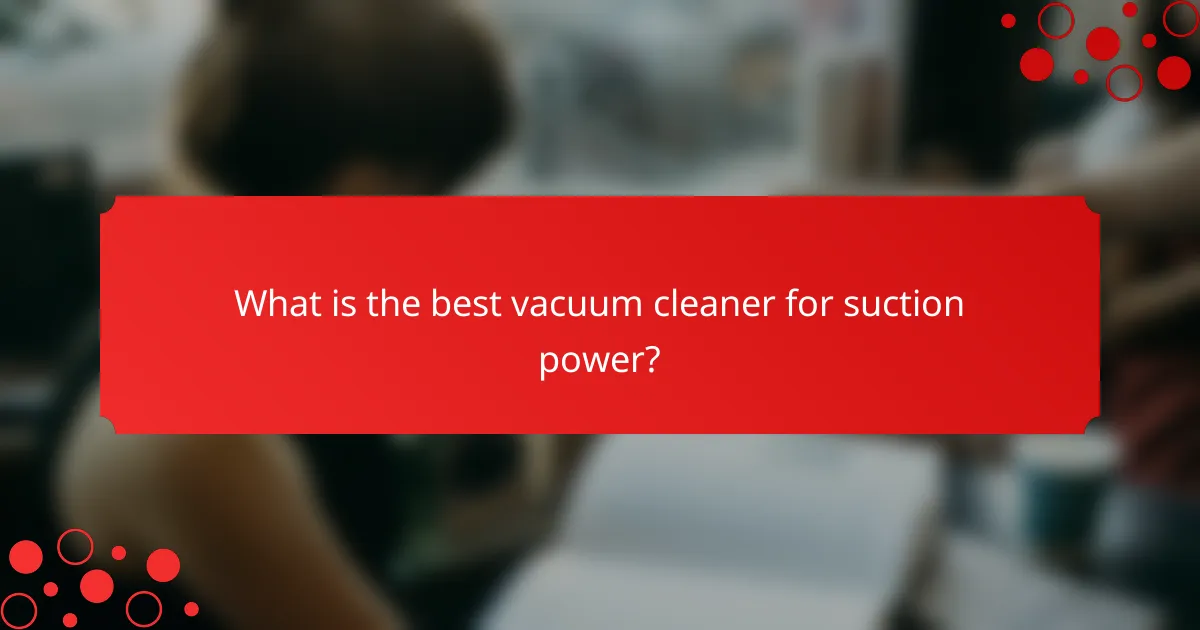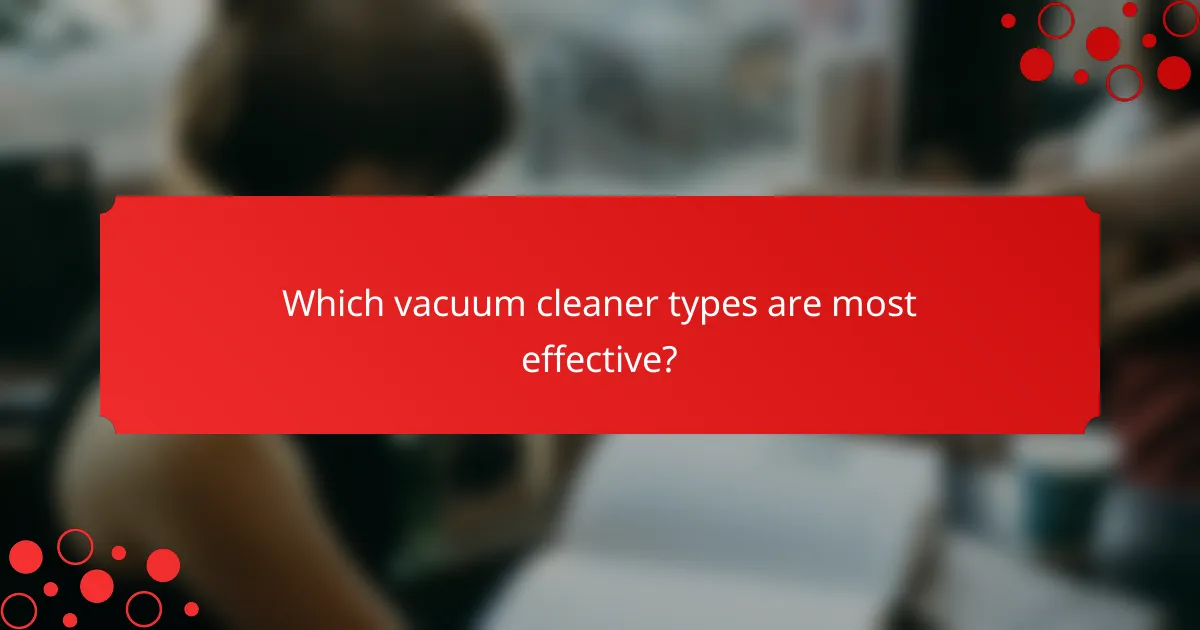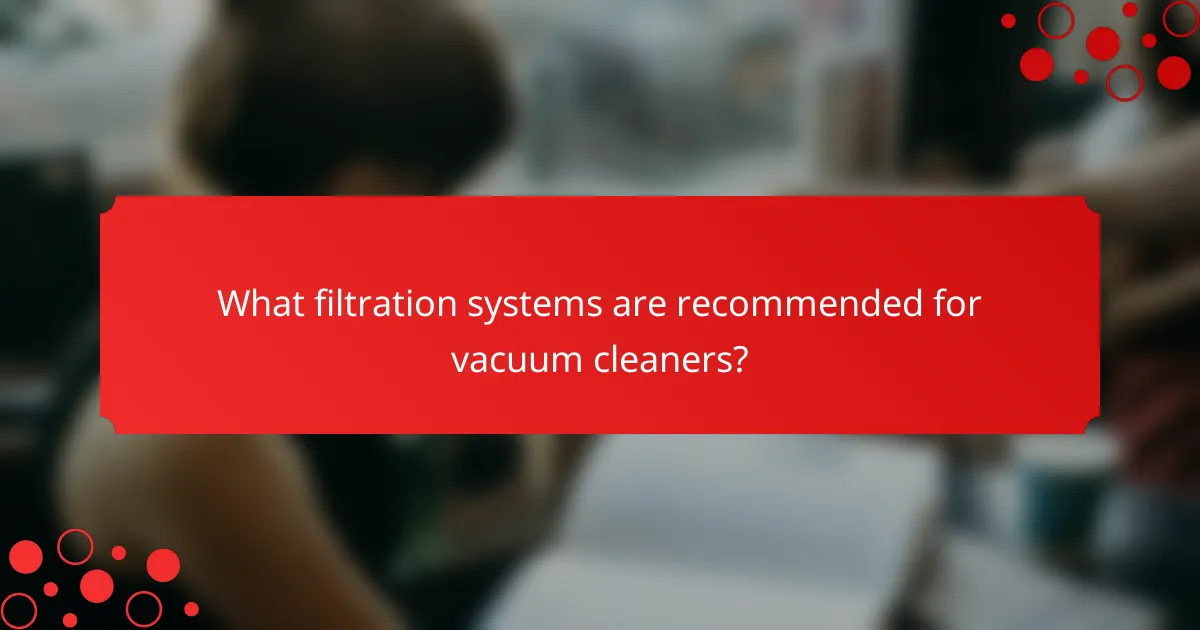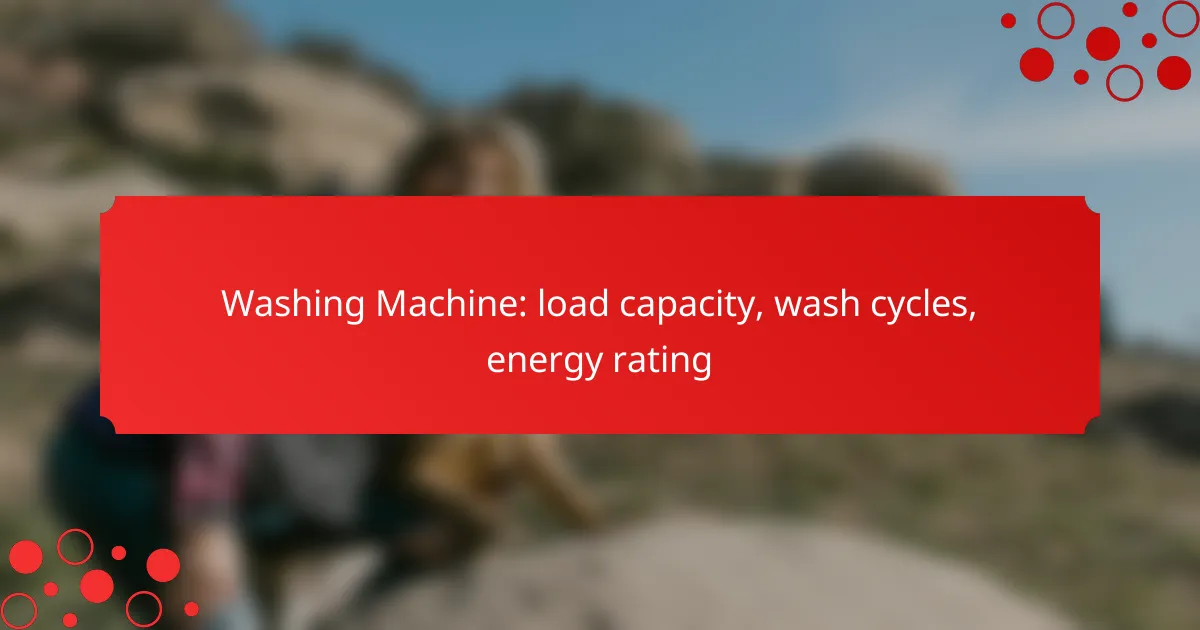A vacuum cleaner’s suction power is essential for effective dirt removal, with stronger airflow and brush design enhancing performance across various surfaces. The type of vacuum, whether upright, canister, or robotic, plays a significant role in its cleaning capabilities, catering to different needs and environments. Additionally, a well-designed filtration system is crucial for maintaining air quality while ensuring optimal cleaning efficiency.

What is the best vacuum cleaner for suction power?
The best vacuum cleaner for suction power combines strong airflow with effective brush design to maximize dirt removal from various surfaces. Look for models that balance suction strength with filtration efficiency to ensure optimal performance.
Dyson V15 Detect
The Dyson V15 Detect is renowned for its powerful suction, featuring a high-torque cleaner head that adapts to different floor types. Its laser dust detection technology illuminates hidden dust, ensuring thorough cleaning.
This model also includes advanced filtration that captures 99.99% of particles as small as 0.3 microns, making it an excellent choice for allergy sufferers. The V15’s battery life allows for up to 60 minutes of run time, depending on the mode used.
Shark Vertex DuoClean
The Shark Vertex DuoClean is designed with dual brush rolls that work together to enhance suction power on both carpets and hard floors. This model features a self-cleaning brush roll that prevents hair wrap, making maintenance easier.
With its HEPA filtration system, the Vertex captures allergens and dust, promoting cleaner air in your home. It also has a flexible design that allows for easy maneuverability and access to tight spaces.
Hoover WindTunnel 3
The Hoover WindTunnel 3 offers strong suction with its three-channel suction technology, which lifts and removes deep-down dirt from carpets. This upright vacuum is equipped with a multi-cyclonic filtration system that helps maintain suction over time.
It includes a HEPA filter that traps 99.97% of dust and allergens, making it suitable for households with pets. The WindTunnel 3 also features a lightweight design, making it easy to carry and use throughout your home.

Which vacuum cleaner types are most effective?
The effectiveness of vacuum cleaners largely depends on their type, including upright, canister, and robotic models. Each type offers unique advantages and is suited for different cleaning needs and environments.
Upright vacuum cleaners
Upright vacuum cleaners are known for their powerful suction and ease of use on carpets and large areas. They typically feature a motorized brush roll that helps lift dirt and debris from carpet fibers effectively.
When choosing an upright vacuum, consider its weight, maneuverability, and whether it has adjustable height settings for different carpet types. Many models also come with additional attachments for cleaning upholstery and hard-to-reach areas.
Canister vacuum cleaners
Canister vacuum cleaners offer versatility and are often more effective on hard floors and delicate surfaces. Their design allows for better reach under furniture and around obstacles, making them ideal for homes with varied flooring types.
Look for a canister vacuum with strong suction power and a good filtration system, especially if you have allergies. Many models come with specialized tools for dusting and crevice cleaning, enhancing their usability.
Robotic vacuum cleaners
Robotic vacuum cleaners provide convenience by automatically navigating and cleaning floors without manual intervention. They are best for maintaining cleanliness in homes with light to moderate dirt levels.
While robotic vacuums may not match the suction power of traditional models, they can be programmed to clean on a schedule. Consider battery life and navigation capabilities when selecting a robotic vacuum, as these factors influence their efficiency and coverage area.

How does suction power impact cleaning efficiency?
Suction power is a critical factor in determining how effectively a vacuum cleaner can remove dirt and debris from surfaces. Higher suction power generally leads to better cleaning efficiency, especially on carpets and rugs, while lower suction may be better suited for delicate surfaces to prevent damage.
Higher suction for deep cleaning
Vacuum cleaners with higher suction power are designed to penetrate deep into carpet fibers, effectively lifting out embedded dirt and allergens. This is particularly beneficial for households with pets or heavy foot traffic, where deep cleaning is essential to maintain hygiene.
When selecting a vacuum with strong suction, look for models that offer adjustable settings. This allows you to optimize suction for different types of flooring, ensuring thorough cleaning without damaging surfaces.
Lower suction for delicate surfaces
For delicate surfaces such as hardwood floors or upholstery, lower suction power is advisable to prevent scratches or fabric damage. Many vacuum cleaners come with settings or attachments specifically designed for these surfaces, allowing for effective cleaning without excessive force.
When using a vacuum on delicate materials, consider using a soft brush attachment. This can help lift dust and debris while minimizing the risk of damage, ensuring your surfaces remain in good condition over time.

What filtration systems are recommended for vacuum cleaners?
Recommended filtration systems for vacuum cleaners include HEPA filters, bagless systems, and activated carbon filters. Each type offers unique benefits and is suited for different cleaning needs, particularly for allergy sufferers or households with pets.
HEPA filtration systems
HEPA (High-Efficiency Particulate Air) filtration systems are designed to capture at least 99.97% of particles that are 0.3 microns in size. This makes them highly effective for trapping dust, pollen, pet dander, and other allergens, making them ideal for allergy sufferers.
When selecting a vacuum with a HEPA filter, ensure it is certified to meet HEPA standards. Regular maintenance, such as replacing or cleaning the filter, is crucial to maintain optimal performance.
Bagless filtration systems
Bagless filtration systems utilize a dust container instead of bags to collect debris. This design allows for easy emptying and eliminates the ongoing cost of purchasing replacement bags.
However, bagless systems can release dust back into the air when emptied, so it’s important to choose models with effective cyclonic separation technology. Regular cleaning of the dust container and filters is necessary to prevent clogs and maintain suction power.
Activated carbon filters
Activated carbon filters are designed to absorb odors and volatile organic compounds (VOCs) from the air. They are particularly beneficial in households with pets or smokers, as they help neutralize unpleasant smells.
While activated carbon filters are effective for odor control, they should be used in conjunction with other filtration systems for comprehensive cleaning. Regular replacement is necessary to ensure they continue to function effectively, typically every few months depending on usage.

How to choose the right vacuum cleaner for your home?
Choosing the right vacuum cleaner involves considering your specific cleaning needs, including the types of floors in your home, any pet hair removal requirements, and available storage space. By evaluating these factors, you can select a model that effectively meets your household demands.
Consider floor types
Different vacuum cleaners perform better on various floor types. For homes with mostly carpets, an upright vacuum with strong suction power is often ideal, while canister models tend to excel on hard floors due to their maneuverability.
When assessing floor types, consider the vacuum’s brush design and height adjustment features. For mixed flooring, a versatile model that can switch between settings is beneficial.
Evaluate pet hair removal needs
If you have pets, look for vacuums specifically designed for pet hair removal. These models typically feature stronger suction and specialized attachments like pet hair brushes that help lift fur from carpets and upholstery.
Additionally, consider the filtration system. HEPA filters are recommended for households with allergies, as they trap fine particles and dander, improving indoor air quality.
Assess storage space
Storage space can significantly influence your vacuum cleaner choice. If you have limited storage, a lightweight canister or a compact upright model may be preferable, as they are easier to store in small closets.
Measure your available space and consider models that can be easily disassembled or have retractable cords for convenience. Avoid bulky vacuums if you need to store them in tight areas.

What are the benefits of using a vacuum cleaner with a HEPA filter?
A vacuum cleaner equipped with a HEPA filter offers significant advantages, particularly in reducing allergens and improving indoor air quality. These filters are designed to trap small particles, making them ideal for households with allergy sufferers or pets.
Reduces allergens
HEPA filters are highly effective at capturing common allergens such as dust mites, pollen, and pet dander. By trapping these particles, the vacuum cleaner helps to minimize their presence in your home, which can lead to fewer allergy symptoms for residents.
When selecting a vacuum cleaner, look for models that specifically state they meet HEPA filtration standards. This ensures that the filter can capture at least 99.97% of particles that are 0.3 microns in size, providing a cleaner living environment.
Improves indoor air quality
Using a vacuum cleaner with a HEPA filter can significantly enhance indoor air quality by reducing airborne pollutants. As the vacuum cleans, it not only removes dirt from surfaces but also prevents allergens from becoming airborne again.
Regular vacuuming with a HEPA-equipped cleaner can contribute to a healthier home, especially in urban areas where dust and pollutants are more prevalent. For optimal results, vacuum high-traffic areas at least once a week to maintain cleaner air.


